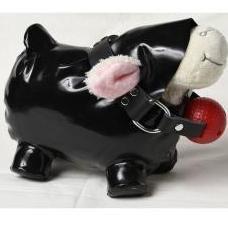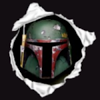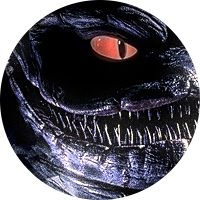Search the Community
Showing results for tags 'Scale'.
-
Hoping someone can help me out here. I'm trying to get this to work, and I'm up against a bit of a time constraint. I've been trying to bake a ptex displacement map from my highpoly mesh object to my lowpoly mesh. But after the bake process the model doubles in scale, but this only seems to happen when baking to Ptex. Am I doing something wrong? Here's a video with my process. Thanks for any help with this! ptexBakeScale.mp4
- 10 replies
-
- 1
-

-
- displacement maps
- scale
-
(and 1 more)
Tagged with:
-
Hey, I am really having a hard time getting 3D coat to work with any kind of scale value, I need to be able to sculpt to exact scales and dimensions. What I am trying to do is sculpt a terrain, and setting a sculpt brush to always sculpt to a max height. So for example I could sculpt to a max height of 300 meters and know when I export my heightmap and then import into engine, that the height will be 300 meters. There have been a few issues I have found, firstly I could not seem to export a heightmap where I could set white to be 3200 meters and black to be 0. Instead 3D coat always makes the heightst point value white. So I decided I would sculpt 2 spots on my mesh, one to be 3200 meters and one at 0 meters, which I would not sculpt above or below, ensuring white would be 3200 and black 0. Unfortunatly I then realized that brush depth changes depending on the radius of the sculpt brush and I have no idea how I am supposed to ensure I am working with correct scales. Please tell me there is a way to work in 3D coat with exact dimensions.
-
Any idea why my scale changes when baking in the retopo room. I'm baking w/PTEX. It's not always happening, but when it does, I don't know why it happens so I don't know how to work around it. In this test, the source and the target meshes are the same, just to rule out any possible discrepancies with the model, and I still get this scaling effect. The funny thing is if I do this exact same thing in Linux and set the edit scene scale to 1.0 it works fine. My Linux version is 4.8.## and my windows version is v4.9.74. I'm trying to get my coworkers to use 3d coat for baking vector displacements, but with this happening so random and no one has a good workaround, they just don't want to deal with it. Anyway, anything you can do would help. Thanks! Here are some images below.
-
Hi, i have a weird scale issue with a particular file. If i tried with new import in a new project either in 4.8.40 or 4.9.65, both will not have issues with scale. However, if i tried new import to an existing project, the scaling is off when i export to external program as seen in the image. work process : 1) import obj(female char) to current project. 2) use a box to cut off the shape of the obj (Female Char). 3) export box as retopo obj 4) import box to external program to match the obj. Failed as shown in the image! So..... how to reset scale in a current project? or export scale correctly.
-
Hey guys, I'm sure this has been asked before, but I was curious if there is a button that will auto-fit the UV islands to completely fill the UV tile/preview window. I have attached an image below of an example I am working on now. Pressing "auto-scale" didn't seem to do much. Thanks! -Davide Foundation_Walls_Bottom.3b
-
Hi, I imported a high poly object into the sculpt room to use as a retopo reference. It was too small so I scaled it up with the Gizmo. Switched over to the Retopo room and built a retopo mesh over it. Exported the retopo mesh; which is now too large compared to the original high poly reference mesh when it is appended as a new subtool back in Zbrush. What is the proper workflow here to handle scale issues. The original high poly mesh was sculpted in Zbrush and is a proper size ( approx. 2.0-2.0-2,0 in tha software). Thanks in advance- I looked through the forums but must have missed the answer.
-
i have imported a .ply scanned asset. After working between programs and importing /exporting it has scaled down ridiculously small! I'm trying to restore the scale to match the original. I import as a surface with zero in the transforms and w/o Voxelisation. A window pops up saying it will remember any transforms for export and i click OK. I have been exporting .obj to use tools in zbrush which I'm more familiar with then importing back. The object needs to be in the exact scale and positioning for the next process but the scale, position and pivot point is completely out of wack!! Also I dont understand the reason for the bracketed numbers... its 11 million tris so it makes it harder to work with. Any help would be amazing! thank you
-
Hi! I've used 3D coat in the past and when importing a model and scaling it to voxel it with better resolution, it asked if I wanted to keep the initial scale and position. I'm currently trying 3DCPrinting and after merging my models together, when I export, and upload in other programs, the scale is all messed up ( Since I've scaled it up to have better voxel resolution). Is there a way to export the model with the initial scales like in 3D Coat ? Thanks
-
Hey guys, I have the same problem as a while ago. Scaling on the model is ok, scene scale, measurement units, etc. everything fine. After unwrapping the upper body part I want is only 4.45x3.75cm large. I am really desperate right now. This has to work. I have some customers for made to measure garments. If I don't solve this it's really bad. Amethysta_1.3b Body.eps
-
As I've started using 3D Coat more often I've noticed one EXTREMELY annoying setting - it remembers the last used scaling transform and applies it to new objects. So for example I've scaled something on z axis. Then I'm importing a cylinder. And instead of cylinder I'm getting a deformed cylinder, with ellipse as a base. Is there a way to turn it off? I have 2 gripes with it - first of all I don't see this scaling anywhere in the menus. What's worse this scale is applied to new scenes. And you can easily imagine how annoying it can be - I'm opening a file sent to me by another modeler. When this feature is turned on and I don't have any sort of indicator that the 1 or 2 axis scaling is applied it is very easy to insert deformed object - especially if the stretching is not severe. So I'm working on assets for this model having the deformed one as a base. Then I sent those assets to original modeler and we're both confused as the objects don't fit.
-
Hi there! Is it possible to scale objects by 2 axes at the same time with "transform" or anyhow else?
-
Hi all, I would like to ask you about using real-scale textures for paint. If i got e.g arroway texture i know real scale coverage (eg.1mx1m) So i would like to "fix" brush size. Is it possible? Thanks, Michal
-
Hello! Basically I try to import a model to a scene previously done as kitbash part in another program. The problem is with a scale of a scene. Since I was not aware of object scale, every thing I have in scene has 0.32 scale. And if I try to import a model, and fit it to the already existing geometries, it's extremelly low res. Is there any way to change scale of everything at one hit?:v I figured out I could put the model and basically resize it to the desired voxel density, then transform it once again to make it fit, but wanted to know is maybe there is a shortcut.Thanks a lot!
-
Всем привет! 1. Очень хочется иметь возможность в Surface режиме при использовании Pose Tool-а клонировать подобъекты. К примеру у меня есть некий архитектурный объект составленный из каменей, которые я выбираю через Select Object (в Transpose Mode), кручу, скейлю и передвигаю Pose Tool-ом, но очень часто нужно тут-же взять, выбрать один из камней или блоков и склонировать его переместив в нужное место. Сейчас это приходится делать держа все камушки в разных слоях, что очень неудобно при большом их количестве. Очень было-бы удобно дублировать выбранные подобъекты cлоя (при этом они остаются в том-же слое) просто зажав хоткей и переместив гизмо (собственно именно так как это сделано в большинстве программ). 2. Добавить свободное вращение для Transform Gizmo, тоесть вращение сразу по всем осям в зависимости от того куда мы двигаем мышь/перо. Как это работает - можно посмотреть в 3д Максе, когда мы "тянем" не за манипуляторы гизмо. Вот по такому-же принципу былобы круто это реализовать и в 3d-Coat`е. 3. Добавить масштабирование сразу по 2-м осям. Тут думаю всё понятно Можно это кстати сделать по зажатию горячей клавиши масштабирования по одной из осей - тоесть мне нужно отмасштабировать равномерно по X и Y оси, я зажимаю например Alt и тяну за манипулятор масштабирования оси Z - и мой объект скейлится по оси XY. Хорошо-бы это занести в Trello - но мне всё это будет сложно сформулировать на английском, если кто-то это сможет сделать - былобы вобще здорово!
-
I am switching over our pipeline to 3d coat to manage all of our assets. I am about to purchase 2 more licenses of 3d-coat but I am having a difficult time understanding how scale works between multiple 3d aplications. The Manual and the Wiki do not explain in detail how this works and the community at large seems to be confused based on the amount of scale questions. I did a test where I exported a 2meter cube from Maya and From Unity. When I import them into 3d coat I test the scale using the measurement tool (Set to meters) I notice that they are well over 2 meters big. When I export the cubes from 3dcoat and import them into Unity they are huge. I get the opposite effect in Maya where they are tiny. I have exported them manually and with the Applink and get the same result. I have set my scenes to meters before importing any of the assets into 3d coat and the only options I can find that is supposed to support scaling is Edit Scene Scale and Define Measurement. I also get a message asking if I would like to keep the initial scale but warns that this is additive to the initial scale. So if my initial scale is set to meters before I import an object from an external package and I keep initial scale what exactly is going on. Am I missing something obvious? 1 - Could someone please explain to me what exactly Edit scene scale and Define Measurement units are really doing? 2- Can we have an updated explanation of how 3d coat handles scale and maybe like a best practices for working with common 3d application and more specifically Unity? 3- What exactly is Voxel per unit doing? Also It would be nice to have default scaling setups that work best with Unity or Maya ect...... Thanks
- 1 reply
-
- 1
-

-
- scale
- define measurement units
-
(and 1 more)
Tagged with:
-
I need to scale down my model dramatically, and I have a ton of stray objects. Additionally some objects are inside of other objects, making them extremely difficult to select. Is there a way to "select all" in the tweak room, and if not, would it be possible to export an OBJ, scale it down in another program, and somehow reimport all of the textures?
-
Is there a way to scale something and redistribute the voxels so they are not stretched anymore? Lets say I use transform tool to scale something in one axis, and then I try to cut it on the short side just to see some horrible artifacts and unwanted beveling. Is there a way to avoid this? Resampling the voxels surprisingly doesn't do it.
-
Greetings, I'm just finally taking time to sit down with 3D Coat since buying it last December and not only am I finding it to be an incredibly worthwhile purchase, I think it will take over as my main modeling application. My initial desire for 3D Coat was for 3D printing/rapid prototyping. I found one thread on Scale but I just want to make sure I understand the workflow correctly. I'm having trouble creating primitives with specific dimensions. For example, if I want to create a cylinder with a 2mm diameter and drill that through a model for a screw hole, how do I specify that? Or, am I doing this process wrong? Should I create my base mesh(es) in my traditional modeling application, then bring that into 3D Coat for additional detailing, boolean operations, and retopo, then back out? If this is the answer that's definitely suitable, I'm just trying to figure out the most effective process. Thank you.
-
Hello, fellow 3D artists! I'm still new to 3D Coat, so please forgive. I'm sure there's a simple answer to my question: "Is there a way to scale a layer in Paint mode?" For example, I want to scale the depth of a layer to half because the bumpiness is too great. Or I want to scale down the shininess (specularity) of the layer, or opacity. How would I do that? Thank you.
-
Hello guys. I have a problem with a small, real world scale model imported into Voxel Room. First, some facts. The model is 6x2x0.9 cm in size. It will act as: - a volume on which I intend to sculpt several small details that I want to appear on displacement map, - retopo mesh that I will use for displacement baking and texture painting. I imported the object with Merge without voxelizing to keep the details and shape. Also, subdivided it four times before importing. 3D Coat is set to centimetres and measurements I performed on the object after importing it are correct. I said "no" to: because the last time I did that and scaled up the volume in the Voxel Room, the retopo mesh I imported later didn't scale up automatically to fit it. So I ended up with big volume and tiny retopo mesh meaning I was stuck. I'm not sure I understand what this option is for. Problems: - The model is tiny when viewed in the viewport and behaviour of some tools and commands is strange. - Navigation was hard until I reduced horizontal and vertical speeds of some events. - Zooming in works only up to a point. - Camera clipping occurs to early. Tweaking Near plane modulator doesn't seem to affect anything (is it implemented?). - Text tool doesn't work properly. It squeezes fonts vertically because the distance between control points of a curve are too small. - Converting surfaces to voxels (even after typing the value of over 3 million voxels) breaks the volume like if there wasn't enough voxels. I tried fiddling with Voxels->Define measurement units->Voxels per unit, but it looks like this setting doesn't affect the scene in any way. Tried cranking up/down the SceneScale but that also didn't help. It's like with Near Plane Modulator - it doesn't seem to do anything. Do you guys have any advice when working with small real scale objects?
- 2 replies
-
- voxel room
- scale
-
(and 1 more)
Tagged with:
-
Hello there! im new to the forum but been usign 3dcoat for a bit, mainly the retopo feature. i tried the UV feature, but didnt use it while staying in retopo mode, but instead, went to UV mode. after a logn and hard work, i realised that it was considerign the mesh as a different one adn couldnt easily apply the uv changes to the old asset (in retopo mode). FOund that you can save your uv file and load it in retopo mod (by renaming .uv to .mesh) but i have an issue with scale now, as the asset is much smaller. i tried to load it then in max after export, but it was 80 percent bigger or so... anythin im doing wrong? is ther ea way to export my new uved mesh without messing the scale? or just apply it to my retopo mesh? thanks for the help! A
-
I just purchased 3d Coat and am very excited to be using it. I watched the “Damaged Pillar” videos and this is exactly what I want to be doing. I am a set designer working in the film industry and want to use your program to create building elements that have texture like the damaged pillars. Scale is very important, however, and as I sculpt (with voxels) I must always be aware how big the object that I am making is. When I create a cube, for example, I can set a specific size for it? If I want to create a cube that’s 4’ wide x 6’ high x 3’ deep. How do I do that? Also, can I set the grid to a specific size, like a line every 12” for example to help me keep track of scale? Thank you. Cosmas Demetriou







